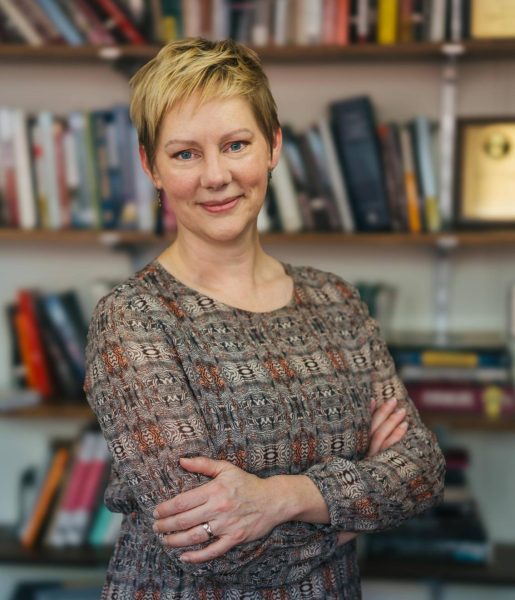Movie Review: ‘Once Upon a Time in Hollywood’
Writer/director Quentin Tarantino’s latest film follows a collection of characters, connected to Hollywood. There is Rick Dalton and Cliff Booth, two friends who have worked on many television programs together. Dalton (DiCaprio) is an actor, widely known for his iconic turn in a western television show called “Bounty Law.” He lives next door to Sharon Tate and Roman Polanski, hoping for a way into stardom. Booth, a legitimate tough guy, is Dalton’s stunt double. He takes the hard falls and risks his body in the name of entertainment. But in 1969 (the year in which the film takes place), Dalton’s career has seen better days. Ironically enough, Dalton and Booth will eventually cross paths with the Manson family.
Some of the best films are made by filmmakers who bring their past experiences to cinematic life. In the case of “Once Upon a Time in Hollywood,” Tarantino has crafted an intriguing film, full of nostalgia and pop culture elements. Those who truly love the realms of entertainment will thoroughly enjoy this film. Tarantino’s crew has perfectly replicated the look and feel of 1969. Credit must be given to Barbara Ling (the production designer) for her detailed efforts. Her work is immaculate. Every street corner feels like a blast from the past. There is a clear sense of historical fluidity. In a world where studios overly rely on computer generated imagery to recreate unique visuals…Tarantino’s practicality is a breath of fresh air.
To coincide with the accurate production designs, Adrianne Phillips’ costuming parallels the styles that were prominent during the 1960s. Every outfit looks legitimate, and very quickly, it becomes clear that thought was put into every outfit. Overall, many looks are cinematically replicated. The rough outfits of the Manson family, while perfectly realized, conjure up feelings of dirtiness and discomfort. Hollywood’s glamorous attire is flashy and flamboyant, pointing to the larger than life image of classic stars within the old Hollywood system. The frontier attire feels like an accurate copy of old western television shows, like “Gunsmoke,” “Bonanaza,” and “Wanted Dead or Alive.”
Unsurprisingly, Tarantino’s penchant for selecting music is unmistakably great. When characters turn on the radio, we hear classic music, which thrusts us into an iconic year, full of change, wonderment, and beauty. As viewers, we feel the artistic charge that was so prevalent in the 1960s. Whether it be Simon and Garfunkel, Paul Revere and the Raiders, or Neil Diamond, Tarantino’s musical selections are part of an effective motion picture soundtrack, brimming with energy and versatility. It’s the organization of a filmmaker who is desperately in love with this time and place.
As a whole, Tarantino’s picture can be seen as a convincing time capsule, showcasing a world that once was. Robert Richardson’s top-notch cinematography gives “Once Upon a Time in Hollywood” a stylish look, phenomenally suitable for nostalgic immersion. Richardson’s camera skills provide the flick with a prodigious identity. In particular, there is a brilliant crane shot, which wonderfully encapsulates the move going experiences of yesteryear. Richardson is Tarantino’s go-to cinematographer, and for good reason. Together, they create exceptional films.
Of course, the flick has interesting characters. Tarantino is one of the best screenwriters of all time, and here, he creates a horde of compelling characters. Part of Tarantino’s cinematic appeal is clever writing. Even the smallest of characters have memorable moments. Certain characters are barely seen, sure. But overall, Tarantino loves every character that he creates. In this film, there are many small roles that leave a lasting impression.
Kurt Russell plays a stuntman who has a ton of connections. Russell, an iconic performer, plays an extremely serious character, but in classic fashion, he conveys underlying humor, largely connected to frustration. Timothy Olyphant portrays a western television star, basking in the glory of a stellar career. In the past, Olyphant become an icon of television, due to “Deadwood” and “Justified” (two western shows). Thus, Olyphant looks very at home with this western oriented role. The end result is a performance that makes us want more out of the talented actor.
Margaret Qualley plays a Manson family member. Three years ago, Qualley was a part of Shane Black’s “The Nice Guys,” a crime film set in the 1970s. Here, she has a meatier role that truly showcases her cinematic talents. Qualley’s seductive yet mysterious performance helps set the stage for a tense showdown at Spahn Ranch (Charles Manson’s former home). As Charles Manson, Damon Herriman does what he can with a limited amount of screen time. His awkward mannerisms make us uncomfortably intrigued. Lastly, Al Pacino (a living legend) plays a Hollywood agent. Pacino’s screen time, while limited, is a rollicking good time.
Above all else, there is the trio (Tate, Dalton, and Booth). Many fans have been curious about Margot Robbie’s portrayal of Sharon Tate. I am happy to report that Robbie is terrific. Aside from looking like Tate, Robbie wonderfully recreates the politeness that Tate was so well known for. Robbie’s charm and brightness is mesmerizing, and again, we are reminded of what could have been. Unfortunately, Tarantino doesn’t give Robbie much to do. This underutilized character feels largely connected to the fact that Tate’s career was cut short. In real life, we were robbed of her career progressions. And in this fictional world, we want more. It appears that Tarantino (a cinematic genius) wants us to feel a bit of disappointment. But still, I can’t help but wonder about how much more interesting the character of Tate could have been if she was fully developed.
Leonardo DiCaprio and Brad Pitt are truly spectacular in the roles of Rick Dalton and Cliff Booth, respectively. Every great duo is defined by their differences. Differing qualities make these types of relationships infinitely interesting. Together, DiCaprio and Pitt build a tender relationship, which feels heavily inspired by Burt Reynolds and Hal Needham’s real life friendship. DiCaprio’s Dalton is tragically comical. The character’s personal regression is more than believable. DiCaprio’s raw emotions create a nervous figure, filled with stutters, sensibility, and delusion. At times, DiCaprio’s outbursts are remarkably sad. Other times, Dicaprio’s outbursts are comedically enjoyable. Kudos to DiCaprio for finding the personalized versatility that lies within the Rick Dalton character.
Pitt’s Booth has a career that warrants pain and frustration. And yet…Booth appears to be completely content with his existence. In 2009, Pitt was cast as Aldo Raine in Tarantino’s “Inglourious Basterds.” Pitt’s performance was widely praised, and to this day, fans continue to mimic the character. Here, Pitt receives another great role, which will eventually join the ranks of Pitt classics, like “Seven,” “Fight Club,” “12 Monkeys,” and “Inglorious Basterds.” In every scene, Pitt is the epitome of cool. His easy going personality creates many layers of comfortability. When crap hits the fan, Pitt’s reactionary makeup constructs a ton of memorable moments, brimming with humor and cleverness. As viewers, we wish that we could be this cool under fire.
Like Howard Hawkes’ “Rio Bravo,” “Once Upon a Time in Hollywood” feels like a hangout movie. Often times, there isn’t much happening. We, the audience, are forced to simply hangout with these characters. Their infectious personalities put us in the presence of warm company. As the film progresses, Tarantino throws us into the confines of the entertainment industry. Like the fictional crew, we are hanging out with talented artists. Like the fictional characters, we are stationed on television sets. Like the fictional performers, we are forced to endure the ongoing pressure that lies within the world of entertainment. The end result is an expansive cinematic world, defined by meticulous craftsmanship and artistic love.
Like many Tarantino films, “Once Upon a Time in Hollywood” is too long in spots. Tarantino relishes every second of photographic visibility. Very quickly, it becomes evident that his film is an exercise in style over substance. Most times, Tarantino is more focused on the 1960s setting than the actual narrative. As a result, the characters aren’t as emotionally well rounded as they could have been. Once the film reaches its climax, the suspense is palpable. Unfortunately, the film, as a whole, fails to consistently build up its tension.
I highly recommend “Once Upon a Time in Hollywood.” Quite frankly, it’s one of my favorite movies of this year. Since 1992, Tarantino has been a cinematic auteur, capable of pinning heads to seats. He’s a unique voice within cinema, and according to him, retirement is near. Obviously, no one wants to see Tarantino retire in the near future. But as film fans, we should be grateful for his existence. Tarantino, in my mind, hasn’t made a bad film. He’s been a beacon of consistency. Ladies and gentlemen, go out and support this film.
My Grade: A-
Dillon McCarty can be contacted at [email protected].
Your donation will help continue the work of independent student journalism at Marshall University. If you benefit from The Parthenon's free content, please consider making a donation.






